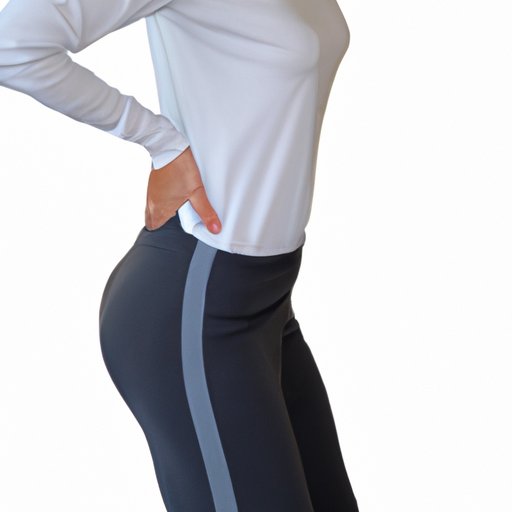
Introduction
Lower back pain is a common condition that affects millions of people worldwide. It can be caused by several factors, including injury, poor posture, or underlying medical conditions such as arthritis or osteoporosis. Severe lower back pain can hinder daily activities and take a toll on a person’s wellbeing. The good news is that there are several ways to alleviate lower back pain without resorting to surgery or invasive procedures. In this article, we will discuss some key methods to relieve severe lower back pain, ranging from exercises and therapy to posture and medication.
Exercise
Exercise is a crucial component in relieving lower back pain, as it helps strengthen the muscles that support the spine and increase flexibility. Some of the best exercises for lower back pain include pelvic tilts, hamstring stretches, and the bridge pose.
Pelvic tilts involve lying on your back with your knees bent and feet flat on the floor, then gently tilting your pelvis upward while pressing your lower back onto the floor. Hold for a few seconds and release. Do this 10 to 15 repetitions.
Hamstring stretches involve sitting on the edge of a chair with one leg straightened in front of you and the other foot on the floor. Reach forward and try to touch your toes, making sure to keep your back straight. Hold for 30 seconds and repeat with the other leg.
The bridge pose involves lying on your back with your knees bent and feet flat on the floor, then lifting your hips off the ground while keeping your shoulders and feet grounded. Hold for a few seconds and release. Do this 10 to 15 repetitions.
Heat and Cold Therapy
Heat and cold therapy are two effective methods to relieve lower back pain. Cold therapy is ideal for immediate relief, while heat therapy is best for reducing stiffness and increasing flexibility.
For cold therapy, apply a cold compress to the affected area for 20 minutes at a time, as often as every two hours. For heat therapy, apply a warm compress or take a warm bath for 20 minutes at a time, as often as every three hours. Make sure not to use heat therapy on areas of inflammation or if you have a medical condition that makes your skin heat-sensitive, such as diabetes or neuropathy.
Good Posture
Good posture is essential for maintaining spine health and reducing lower back pain. It helps distribute weight evenly and reduce strain on the lower back muscles. Some tips for good posture include sitting up straight with your feet flat on the floor, using a lumbar support pillow, and adjusting your computer screen to eye level.
You also want to make sure to avoid prolonged sitting or standing, as it can put extra pressure on the lower back muscles. Make sure to take regular breaks and stretch throughout the day.
Massage Therapy
Massage therapy is an excellent way to relax muscles that are in spasm and increase circulation. There are several different types of massage that can help relieve lower back pain, including Swedish massage, deep tissue massage, and trigger point massage.
When looking for a qualified massage therapist, make sure to ask for recommendations and check the therapist’s credentials. Some therapists may specialize in treating lower back pain, and it’s essential to find someone who has experience in treating your specific condition.
Medication
Over-the-counter medications such as acetaminophen and ibuprofen can help relieve lower back pain by reducing inflammation and relieving pain. For severe pain, your doctor may prescribe prescription pain relievers or muscle relaxants.
It’s essential to take medication as directed and never exceed the recommended dose. If you experience any side effects or have concerns about a medication, talk to your doctor or pharmacist right away.
Conclusion
Severe lower back pain can be debilitating, but there are several ways to alleviate the pain and improve your daily life. Incorporating exercises, heat and cold therapy, good posture, massage therapy, and medication into your daily routine can help relieve pain and increase flexibility. If you experience severe or chronic back pain, make sure to consult your doctor for further evaluation and treatment.





